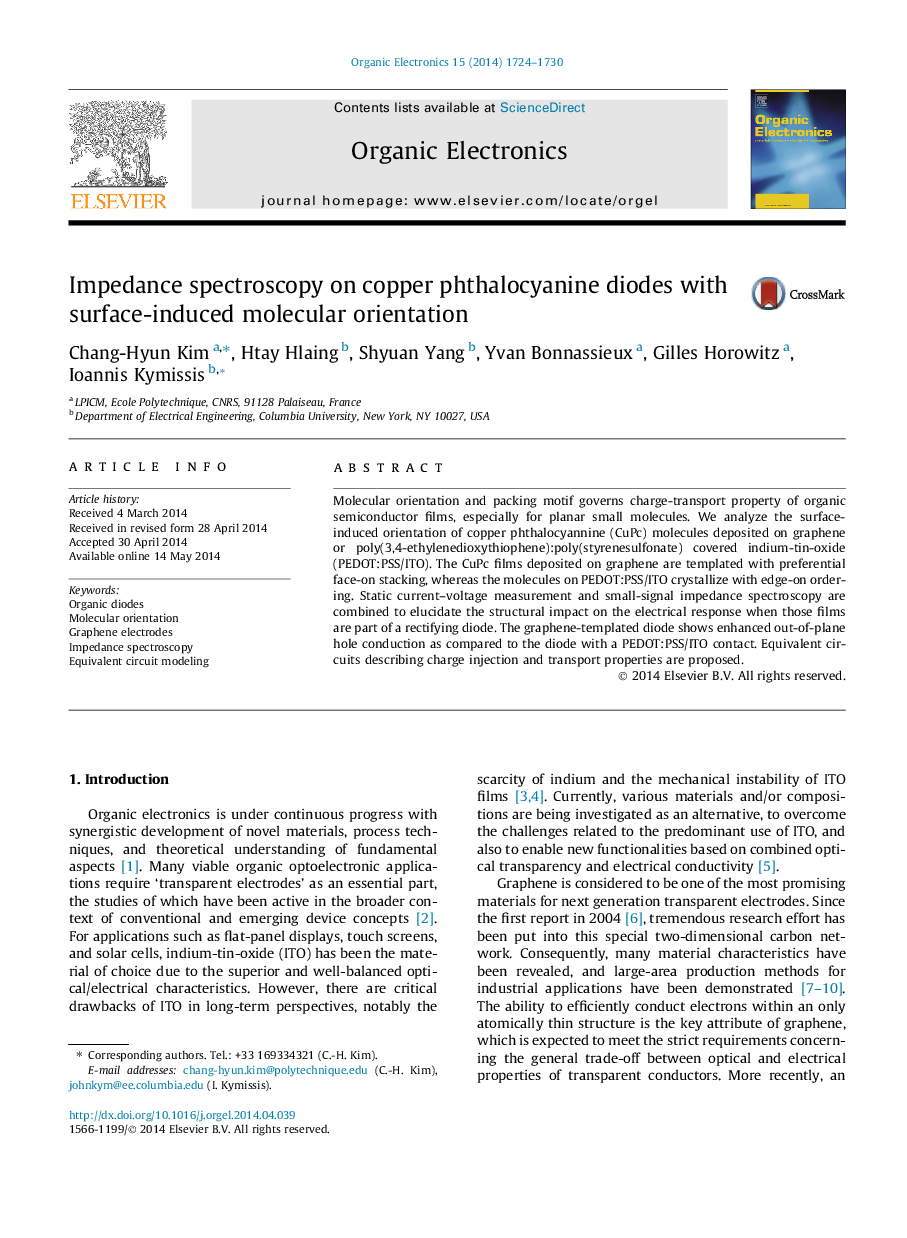| Article ID | Journal | Published Year | Pages | File Type |
|---|---|---|---|---|
| 1263815 | Organic Electronics | 2014 | 7 Pages |
•Monolayer graphene serves as a hole-injecting and molecular-templating surface.•Graphene leads to enhanced out-of-plane mobility of CuPc compared to PEDOT:PSS.•Impedance spectroscopy establishes physical understanding of diode behaviors.
Molecular orientation and packing motif governs charge-transport property of organic semiconductor films, especially for planar small molecules. We analyze the surface-induced orientation of copper phthalocyannine (CuPc) molecules deposited on graphene or poly(3,4-ethylenedioxythiophene):poly(styrenesulfonate) covered indium-tin-oxide (PEDOT:PSS/ITO). The CuPc films deposited on graphene are templated with preferential face-on stacking, whereas the molecules on PEDOT:PSS/ITO crystallize with edge-on ordering. Static current–voltage measurement and small-signal impedance spectroscopy are combined to elucidate the structural impact on the electrical response when those films are part of a rectifying diode. The graphene-templated diode shows enhanced out-of-plane hole conduction as compared to the diode with a PEDOT:PSS/ITO contact. Equivalent circuits describing charge injection and transport properties are proposed.
Graphical abstractFigure optionsDownload full-size imageDownload as PowerPoint slide
